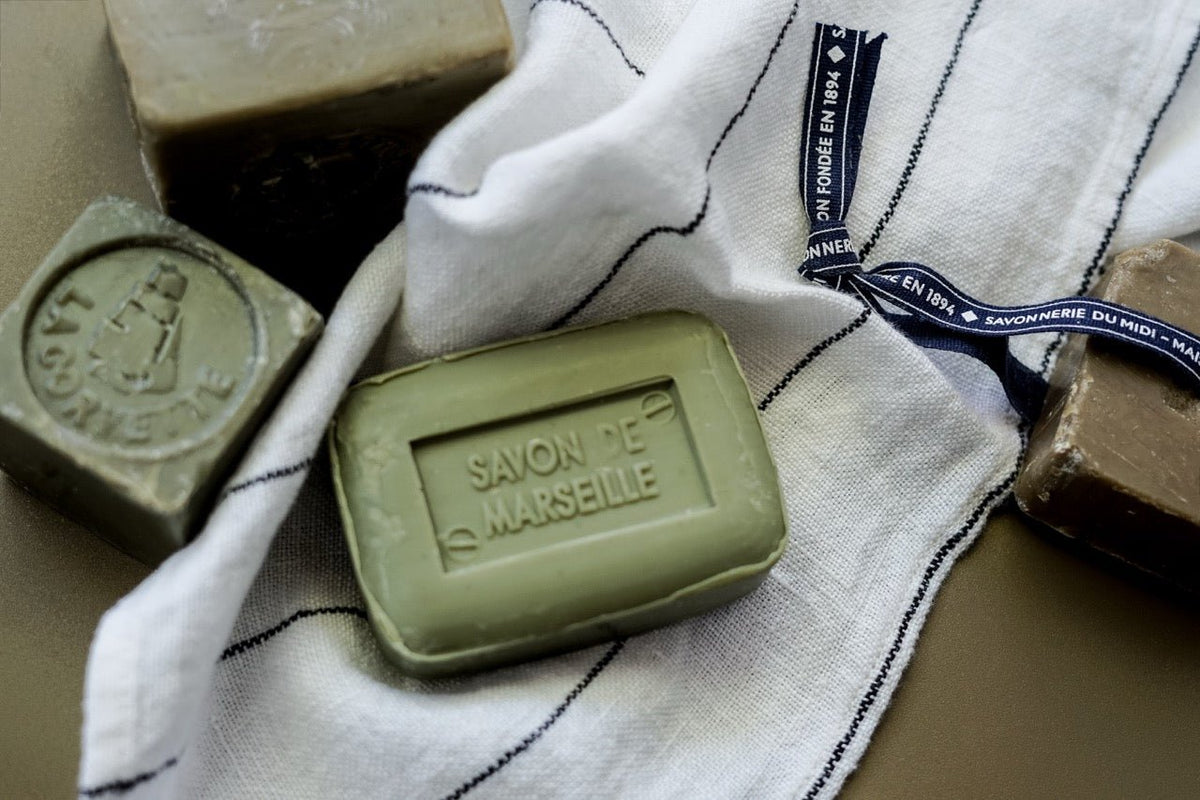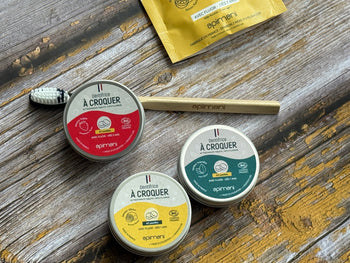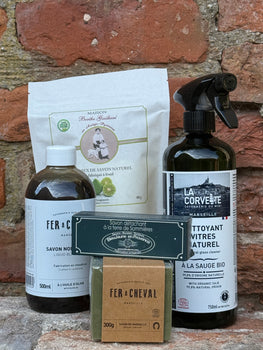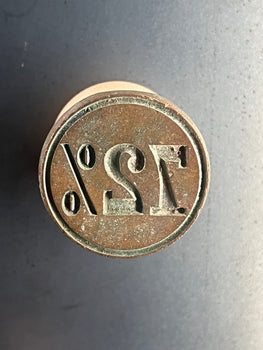
Gifting couldn't be easier
Add a gift message to be emailed to when their parcel arrives, or at a time of your choice.
Quite regularly we will get feedback, questions or even complaints from our customers regarding their soap, or soap flakes, not lathering. So what better place to explore and explain this than here!
For many of us, lather is part of what makes soap feel “effective.” But what really causes soap to lather, and is more lather always better? To answer that, we are going to explore the chemistry, history, and sustainability behind those bubbles.
Short answer: No.
Longer answer: The cleaning power of soap comes from its molecular structure, not from bubbles or foam.
At its simplest, soap is made when oils or fats (like olive, coconut, or palm) are combined with an alkali (traditionally lye). This process, called saponification, creates soap and glycerin.
The molecules of soap have two parts:
A hydrophilic head (water-loving)
A hydrophobic tail (water-repelling, oil-loving)
When mixed with water, these molecules surround dirt and oils on the skin, allowing them to be rinsed away. As you rub the soap, air gets trapped with the soap and water mixture, forming bubbles — this is what we call lather. In simple terms Lather is mostly air trapped in soap and water — it looks satisfying, but it’s not what actually does the cleaning.
Different oils affect the type and richness of lather:
Coconut oil: produces big, fluffy bubbles.
Palm kernel oil: adds stability to the foam.
Olive oil: creates a creamier, lower-foam lather.
Castor oil: helps retain lather for longer.
So the basic formulation of a soap will determine how bubbly or creamy the lather feels.
In soft water, soap tends to lather more. In hard water, lather is less but the soap still works.
Indeed, water will have more significant impact on 'lather' than oils alone.
Water hardness is all about the minerals dissolved in it — mainly calcium (Ca²⁺) and magnesium (Mg²⁺).
Soft water → Low in calcium and magnesium. It feels silkier on skin, makes soap lather easily, and leaves little residue.
Hard water → High in calcium and magnesium. It can leave chalky deposits (“limescale”) on taps and kettles, makes soap harder to lather, and sometimes leaves skin feeling tight or hair dull.
Quick test: If your soap produces a rich lather, you likely have soft water. If it produces more scum than foam, your water is probably hard.
Why Does It Differ by Region?
The hardness of water depends on the geology of the land it flows through:
Hard water areas → Regions with lots of limestone or chalk (calcium carbonate). As rainwater seeps through, it picks up calcium and magnesium ions.
Soft water areas → Regions with granite, volcanic rock, or sandstone, which don’t dissolve as many minerals.
Hard vs. Soft Water Around the World
United Kingdom → The south and east (e.g. London, Kent, Essex) are famous for hard water because of chalky bedrock. Scotland, Wales, and the north often enjoy softer water thanks to granite landscapes.
United States → The Midwest and Southwest are among the hardest-water regions (lots of limestone aquifers). Pacific Northwest and New England tend to have softer water.
Europe →
France → Provence and the south are harder (lots of limestone), while Brittany and the Massif Central are softer.
Germany → Varies a lot, with hard water around Berlin and Munich.
Australia → Generally soft in coastal regions but much harder inland.
Japan → Naturally soft water in most regions (volcanic rock), which is one reason why tea tastes delicate and soap lathers so well there.
Everyday Differences
Laundry & Soap → Soft water = richer lather, less detergent needed. Hard water = more soap scum, more detergent required.
Cooking & Tea → Soft water brings out subtle flavours (tea, coffee, sake). Hard water can make tea taste flat or cloudy.
Skin & Hair → Soft water is kinder to skin and hair, while hard water can dry them out or leave a film.
Appliances → Hard water builds limescale in kettles, boilers, and dishwashers, while soft water doesn’t.
Marseille soapand other traditional soaps are prized in hard-water regions, because their olive oil base is especially effective at cleaning even when little to no reduced.
Lather has always been associated with cleanliness and comfort. For centuries, people believed that the more foam a soap created, the better it must be at removing dirt. Commercial soaps and shampoos often include foaming agents (like SLS) to give that bubbly effect, because consumers equate bubbles with effectiveness.In reality, bubbles themselves don’t do the cleaning — it’s the chemical action of soap molecules.
Still, lather does have its benefits:
Psychological reassurance: Foam makes us feel like the soap is “working.”
Better coverage: Lather helps spread soap across skin and surfaces evenly.
Pleasant sensory experience: Rich foam feels luxurious, soft, and indulgent.
Practicality: In shaving soaps, for example, lather cushions the skin and razor.
It’s no surprise that soap makers, especially from the 19th century onwards, started designing formulas specifically for extra foaminess.
The downside is that modern consumers became conditioned to expect big bubbles — leading manufacturers to add artificial foaming agents particularly in products that are sold in countries with harder water like the UK.
Common examples include:
Sodium Lauryl Sulfate (SLS)
Sodium Laureth Sulfate (SLES)
Cocamidopropyl betaine
These synthetic surfactants create dramatic foam but can strip natural oils from the skin, leaving dryness or irritation. In shampoos and body washes, sulfates are especially known for aggravating sensitive skin.
So while lather feels good, more bubbles don’t necessarily equal better cleansing — and in some cases, they may even cause harm.
Ancient soaps: The earliest soaps from Babylon (c. 2800 BCE) were simple mixtures of animal fats and ash. They produced little lather and were used mainly for textiles, not skin.
Aleppo soap (Syria): Made with olive and laurel oils, Aleppo soap produces a creamy, low-lather wash. It inspired later Mediterranean soaps.
Savon de Marseille (France): From the 17th century, Marseille became famous for cube soaps made with olive oil. These created a silky, modest lather prized for both laundry and skincare. Shop Traditional Marseille Soap Cubes here.
Industrial revolution: As soap became mass-produced, manufacturers used coconut and palm oils for their foaming qualities, catering to consumer expectations.
20th century & beyond: Synthetic detergents (syndets) took over, offering exaggerated lather at low cost — but at the expense of skin gentleness and environmental sustainability. Liquid soaps have the worst reputation but these ingredeints are present in most readily available bar soaps too. Browse gentle liquid soaps here
This history shows how our idea of “good soap” shifted from gentle creaminess to abundant foam.
Good, when:
It’s created naturally by plant oils (like coconut, olive, shea).
It helps spread soap evenly across the skin.
It adds enjoyment to the washing experience.
Bad, when:
It’s artificially boosted with harsh sulfates or petrochemical surfactants.
It gives a false sense of “more lather = cleaner skin.”
It causes dryness, irritation, or disrupts sensitive skin.
Ultimately, natural lather is harmless and beneficial — but artificial foaming additives should be approached with caution. You don't need lather for a proper soap to clean.
This brings us to an important modern question: how sustainable is lather?
Natural Oils vs. Synthetics
Traditional soaps made with olive, coconut, or shea butter are biodegradable and eco-friendly.
Synthetic surfactants (like SLS) can persist in waterways, harming aquatic ecosystems.
Consumer Habits
We often use more soap than necessary because of the belief that bigger lather = cleaner. This leads to waste.
Heritage Soaps
Marseille and Aleppo soaps show us that effective cleaning doesn’t require huge lather. Their low-foam, biodegradable recipes are models of sustainability.
When shopping for soap, ask yourself:
Does this soap use natural oils for lather instead of synthetics?
Do I really need lots of foam, or do I prefer a gentle, creamy wash?
Is the soap biodegradable and eco-friendly?
Does the brand have a tradition of sustainable soap-making (e.g., Provence or Aleppo)?
Soap lather is more than just bubbles — While rich foam can feel luxurious, it’s not the measure of a soap’s quality or cleaning ability.
Natural lather, created by plant oils like olive and coconut, is gentle, effective, and sustainable.
Artificial foaming agents deliver big bubbles but may harm both skin and the environment.
Traditional soaps, like Marseille and Aleppo, remind us that sustainability and effectiveness don’t depend on excessive foam.
So next time you work up a lather, remember: the bubbles are part of the ritual, but it’s the ingredients behind them that truly matter.
Explore authentic, sustainable soaps from Provence and Marseille at frenchsoaps.co.uk
©️ French Soaps UK 2025
If you would like help shopping this article, or have further product or ingredient questions then please contact us and we will be happy to help. E. bonjour@frenchsoaps.co.uk T. 01423 803080
Telephone or Whats App: 01423 803080
Email: bonjour@frenchsoaps.co.uk
Social: @FrenchsoapsUK
Address: Unit 14 Ousegill Business Park, Carr Side Road, Great Ouseburn, North Yorkshire, YO26 9AE
Sign up for our newsletter and get all the latest news, offers and more delivered straight to your inbox. You can unsubscribe at any time. By 'submitting' you are agreeing to our T&C's and Privacy Policy.
Gifting couldn't be easier
Add a gift message to be emailed to when their parcel arrives, or at a time of your choice.



